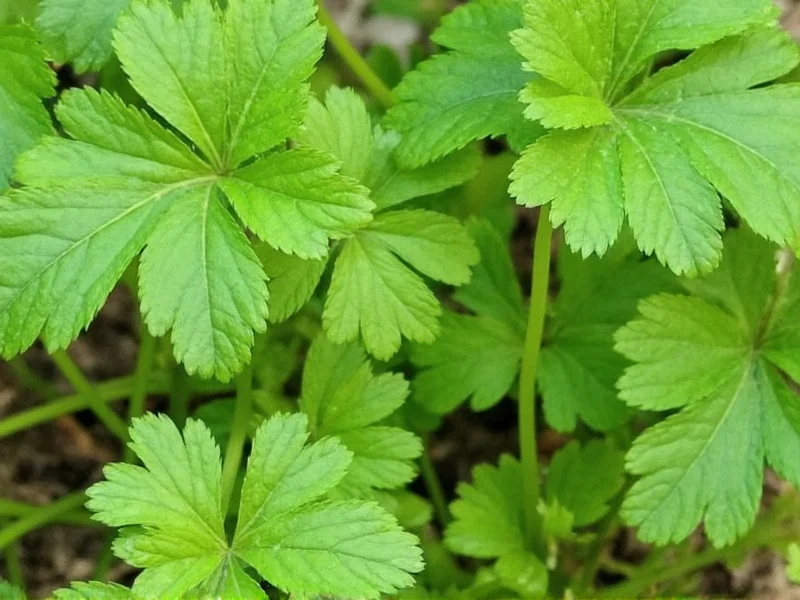The naming confusion surrounding this popular herb stems from regional linguistic differences and historical usage. In the United States and Canada, “cilantro” specifically denotes the leafy green part of the Coriandrum sativum plant, while “coriander” refers to the dried seeds. However, in the United Kingdom, Australia, India, and most other English-speaking countries, the term “coriander” encompasses both the fresh leaves and the seeds, with context determining which part is being referenced.
Botanical Background of Coriandrum sativum
Understanding the “cilantro another name” question requires examining the plant's botanical identity. Coriandrum sativum belongs to the Apiaceae family, which includes parsley, carrots, and celery. This annual herb has been cultivated for over 3,000 years, with archaeological evidence of its use found in Egyptian tombs and Bronze Age European settlements.
The plant produces delicate, lacy green leaves during its early growth stage, followed by small white or pink flowers, and finally the spherical coriander seeds. Both the fresh leaves and mature seeds offer distinct flavor profiles that have made them culinary staples across various world cuisines.
Regional Naming Conventions Explained
The term “cilantro” derives from the Spanish word for coriander, which itself evolved from the ancient Greek “koriannon.” Spanish and Portuguese explorers introduced the herb to the Americas, where the term “cilantro” became standard for the fresh leaves.
| Region | Term for Fresh Leaves | Term for Seeds |
|---|---|---|
| United States & Canada | Cilantro | Coriander |
| United Kingdom & Commonwealth | Coriander | Coriander |
| Mexico & Latin America | Cilantro | Cilantro or Coriandero |
| India | Dhaniya (leaves) | Dhaniya (seeds) |
Clarifying Common Misconceptions
Many people searching for “cilantro another name” encounter confusion about whether cilantro and coriander are different plants. They are not—they come from the same plant at different growth stages. The fresh leaves have a bright, citrusy flavor with soapy notes (for those with the OR6A2 gene), while the dried seeds offer warm, nutty, and slightly citrus characteristics.
Another frequent point of confusion involves “Chinese parsley.” While this is indeed another name for cilantro, it's not related to actual parsley (Petroselinum crispum), though the two herbs share visual similarities and belong to the same plant family.
Culinary Applications Across Cultures
Chefs and home cooks searching for “cilantro alternative names” often need this information for recipe interpretation. In Mexican cuisine, fresh cilantro is essential for salsas, guacamole, and ceviche. Indian recipes typically call for “dhaniya” whether referring to leaves or seeds. Southeast Asian dishes frequently use the term “coriander leaves” in ingredient lists.
When substituting ingredients, understanding these naming conventions becomes crucial. If a British recipe calls for “coriander” in a fresh salsa, it means the leaves, not the seeds. Conversely, if an American recipe specifies “coriander” in a curry powder blend, it refers to the ground seeds.
Botanical vs. Culinary Terminology
The scientific community consistently uses “coriander” for the entire Coriandrum sativum plant, which explains why many non-North American English speakers find the American distinction between “cilantro” and “coriander” confusing. This botanical terminology helps clarify why searching for “what is cilantro called in other countries” yields “coriander” as the primary answer.
Food historians note that the American culinary distinction emerged in the mid-20th century as Mexican cuisine gained popularity, creating a need to differentiate the fresh herb from the spice commonly used in European cooking. This historical context explains why older American cookbooks often used “coriander leaves” rather than “cilantro.”
Practical Usage Tips
When shopping for this herb, understanding regional naming conventions prevents confusion. In North American grocery stores, look for “cilantro” in the fresh herb section. In international markets or stores outside North America, search for “coriander leaves.” The leaves should be bright green, crisp, and free from yellowing or wilting.
For those exploring “why is cilantro called coriander in some places,” the answer lies in linguistic evolution and regional culinary traditions. This knowledge becomes particularly valuable when interpreting international recipes or communicating with cooks from different cultural backgrounds.
Is cilantro the same plant as coriander?
Yes, cilantro and coriander come from the same plant (Coriandrum sativum). “Cilantro” refers specifically to the fresh leaves in North American usage, while “coriander” typically refers to the seeds. In most other English-speaking countries, “coriander” describes both the leaves and seeds.
Why do Americans call it cilantro instead of coriander?
The term “cilantro” entered American English through Spanish influence as Mexican cuisine gained popularity in the 20th century. This created a distinction between the fresh herb (cilantro) and the dried spice (coriander seeds), which wasn't necessary in regions where both parts were traditionally called “coriander.”
Can I substitute dried coriander for fresh cilantro?
No, dried coriander seeds cannot substitute for fresh cilantro leaves. They come from the same plant but have completely different flavor profiles and textures. Cilantro has a bright, citrusy freshness, while coriander seeds offer warm, nutty notes. For substitutions, try flat-leaf parsley with a squeeze of lime juice.
What’s the difference between cilantro and Chinese parsley?
Chinese parsley is simply another name for cilantro. Despite the name, it’s not related to actual parsley but earned this designation due to visual similarities. Both terms refer to the fresh leaves of Coriandrum sativum, with “Chinese parsley” being less common than “cilantro” or “coriander leaves.”
Why does cilantro taste like soap to some people?
Approximately 21% of the population has a genetic variation (OR6A2 gene) that makes them perceive certain aldehydes in cilantro as soapy. This isn’t related to the “cilantro another name” question but explains why some people dislike the herb regardless of what it’s called. Cooking cilantro briefly can reduce this soapy perception for sensitive individuals.











 浙公网安备
33010002000092号
浙公网安备
33010002000092号 浙B2-20120091-4
浙B2-20120091-4